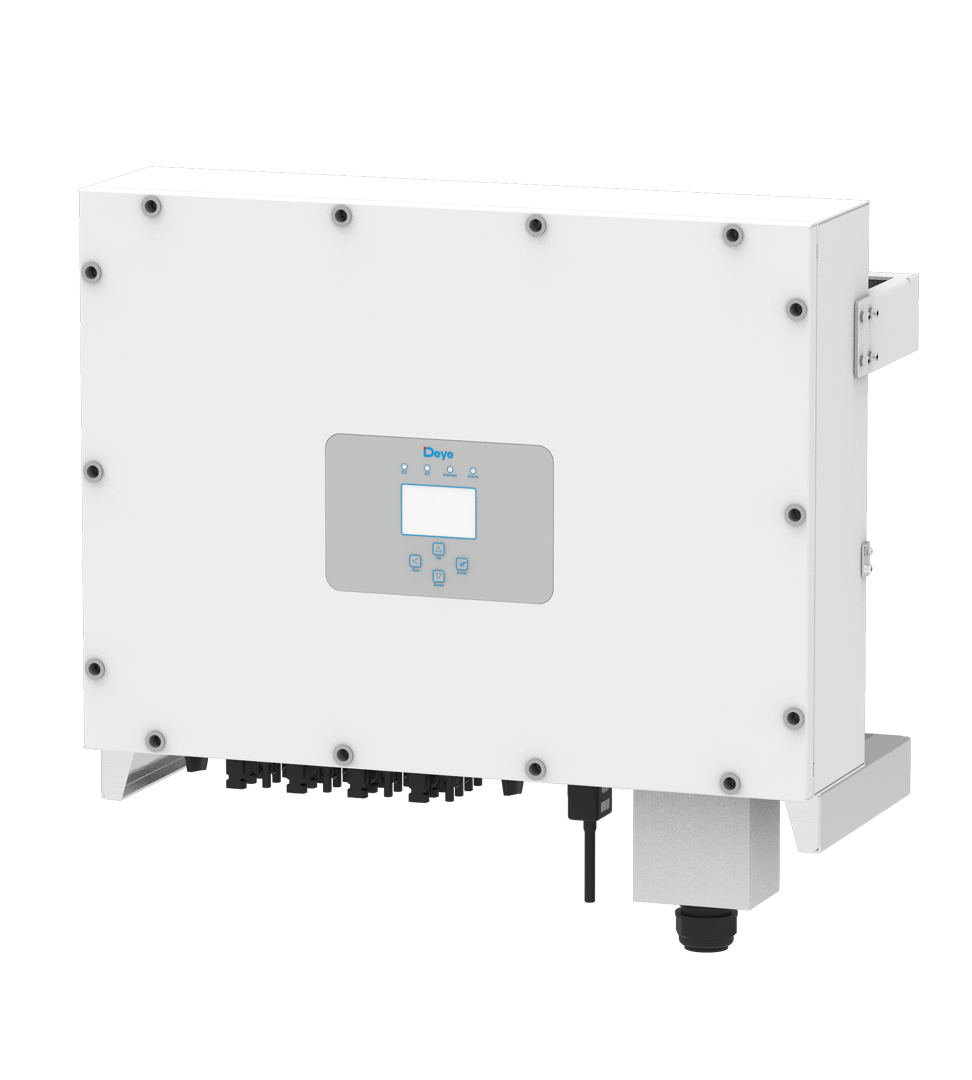Three-phase string inverters offer several advantages in large solar photovoltaic (PV) systems. Here are some key advantages:
Higher Power Output: Three-phase string inverters have a higher power output capability compared to single-phase inverters. This makes them well-suited for larger solar PV systems that require handling higher loads and generating more electricity.
Efficient Energy Conversion: Three-phase string inverters are designed for high efficiency in converting DC power generated by solar panels into AC power for use in the electrical grid. Their advanced electronics and power management systems optimize energy conversion, resulting in minimal power losses and higher overall system efficiency.
Cost-Effective Solution: When compared to central inverters, three-phase string inverters offer a more cost-effective solution for large-scale solar PV systems. The distributed architecture of string inverters allows for modular installation and easy scalability, reducing upfront costs and offering flexibility for future expansions or maintenance.
Improved Performance Monitoring: Three-phase string inverters often come equipped with advanced monitoring and data logging capabilities. These features enable real-time monitoring of individual strings or modules, allowing for precise performance analysis and easy identification of any issues or underperforming components within the system.
String-Level MPPT: Three-phase string inverters typically incorporate individual Maximum Power Point Tracking (MPPT) for each string or module connected to the inverter. This ensures that each string operates at its maximum power output, even when facing varying shading or mismatched conditions. String-level MPPT enhances system performance and increases overall energy yield.
Flexibility in System Design: Three-phase string inverters offer flexibility in system design due to their modular nature. Three Phase String Inverter manufacturers allow for the creation of multiple strings with varying orientations, panel types, or shading conditions. This flexibility enables optimal utilization of available roof space and customization to site-specific requirements.
Grid Compatibility: Three-phase string inverters are compatible with standard three-phase electrical grids commonly found in commercial and industrial settings. This compatibility simplifies grid integration and allows for seamless connection to the existing electrical infrastructure.


Higher yields / Safe & Reliable / Smart / User-friendly
The Deye 60-80K grid-connected inverter is suited for medium and large-scale commercial rooftops and ground-mounted solar PV system in which reliability and stability are important. the full series inverter has 30% DC input oversizing ratio and 10% AC output overloading ratio, offering a faster return on investment.

 English
English 中文简体
中文简体 Français
Français Deutsch
Deutsch italiano
italiano Português
Português Nederlands
Nederlands Tiếng Việt
Tiếng Việt Polskie
Polskie Español
Español Australia
Australia